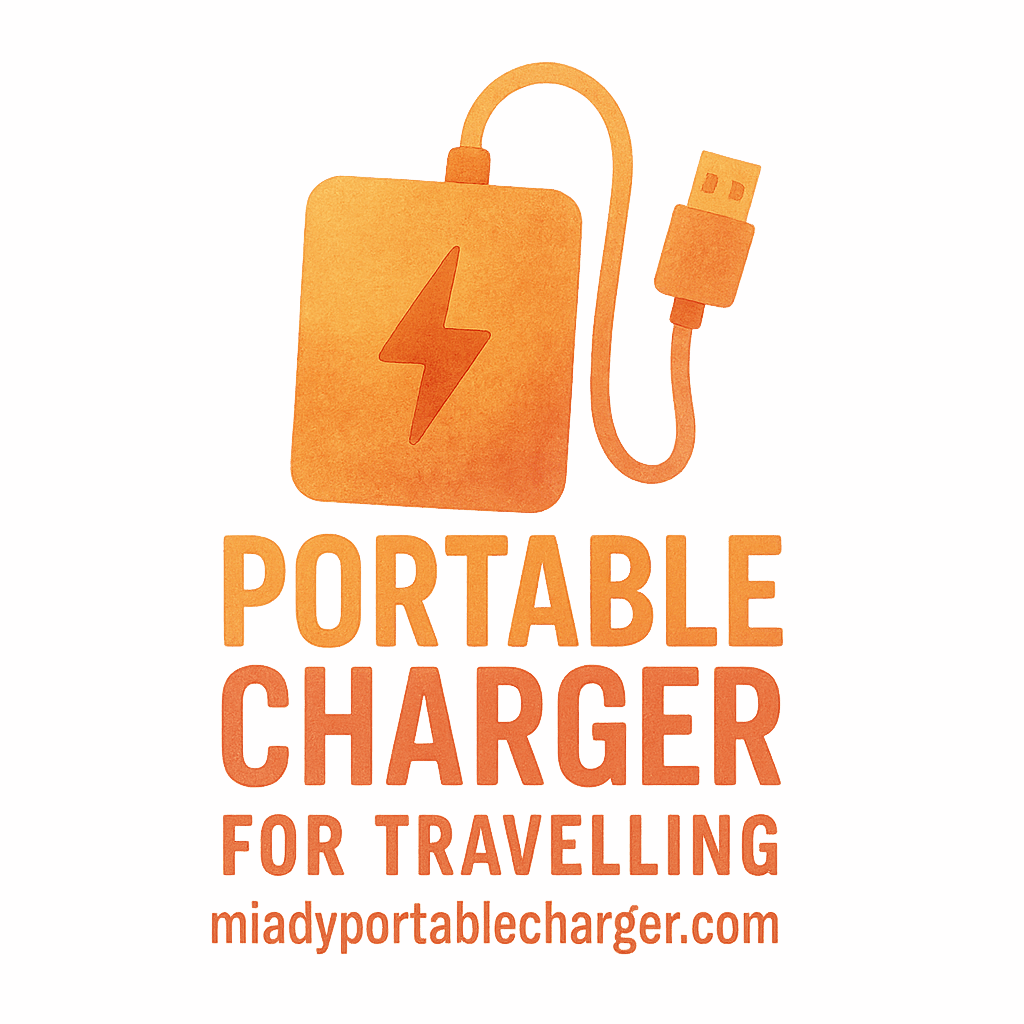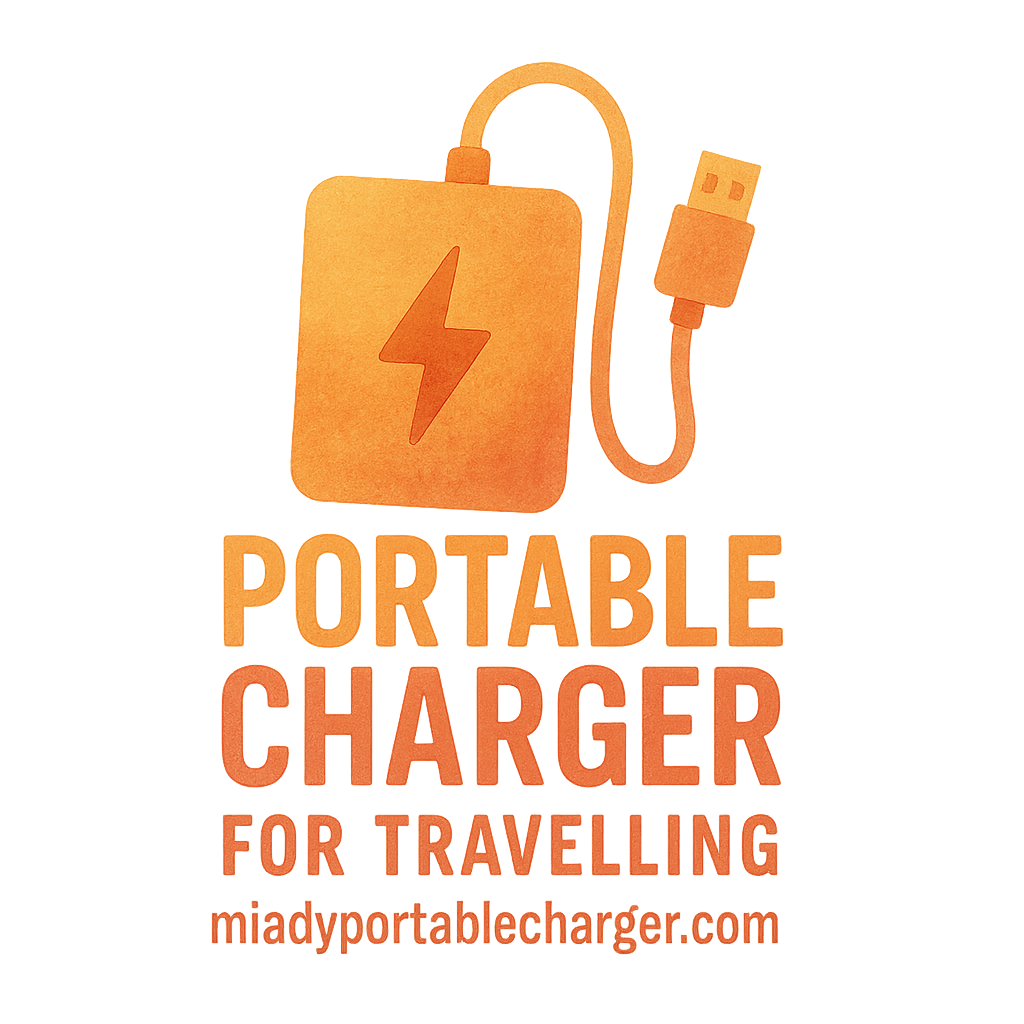Introduction: Why Charging Your Portable Charger Faster Matters
When you’re getting ready for a trip, ensuring that your portable charger is fully charged is just as important as packing your essentials. Whether you’re about to embark on an adventure or need your devices for work, having a charged portable charger can save you from stressful moments. However, if you find yourself in a rush, knowing how to charge your portable charger faster can make all the difference.
In this guide, we’ll dive into five tricks to charge your portable charger faster before your trips, helping you save time and stay connected. By the end, you’ll be able to charge your portable charger like a pro, ensuring that you’re never left without power during those essential moments on the road.
For more charging tips and information on essential travel gear, check out Miady’s Charging Tips to level up your portable charger game.
The Power of Preparation: Charge Ahead of Time
A well-prepared traveler knows the importance of being proactive, and that’s especially true when it comes to charging your devices. To avoid rushing at the last minute, it’s best to charge your portable charger ahead of time. However, even with enough time to spare, optimizing how you charge it can help reduce the waiting time. Let’s explore five simple tricks to help you charge your portable charger faster before embarking on your next journey.
Trick 1: Use a High-Speed Charger
When you’re in a rush to get your portable charger ready, the type of charger you use matters more than you think. High-speed chargers are your best bet for faster charging.
Why a High-Speed Charger is Essential
A high-speed charger is built to deliver more power, allowing your portable charger to charge quicker. When you’re using a standard charger, the process can be agonizingly slow, especially if your portable charger has a high-capacity battery. High-speed chargers help mitigate this, ensuring that you get more energy in less time.
For an in-depth look at choosing the right charger for your needs, check out Miady’s Buying Guides.
Choosing the Right High-Speed Charger for Your Device
When selecting a high-speed charger, make sure it’s compatible with your device. Look at the charger’s wattage and voltage output to ensure it can handle the power needs of your portable charger. A 30W charger will be more efficient than a 5W charger, reducing charging time significantly.
For high-capacity chargers designed for optimal charging speed, visit Miady’s High Capacity Section.
Trick 2: Opt for a Wall Outlet Over USB Ports
We’re all familiar with USB ports, but when it comes to fast charging, wall outlets are the way to go.
Why Wall Outlets Are More Efficient
Wall outlets provide direct, unfiltered power, typically offering higher currents than USB ports. This steady supply of electricity helps your portable charger fill up much faster. USB ports, especially those on computers or older devices, are often not optimized for fast charging and can slow down the process.
USB vs Wall Charging: Pros and Cons
- USB Ports: Portable and easy to use, but can be slow.
- Wall Outlets: Offer faster charging, but require access to an electrical outlet.
For travel essentials that support wall outlet charging, explore the Miady Travel Essentials Page.
Trick 3: Turn Off Your Device While Charging
When your portable charger is charging, make sure you turn off your device to speed up the process.
How Turning Off Your Device Saves Time and Power
By turning off your portable charger, it can dedicate all its energy to absorbing power from the outlet. When the charger is in use, it often has to share its power between charging itself and keeping the device on, which slows down the entire process.
Is It Really Worth Turning Off?
Absolutely! Turning off your device, even for a few minutes, ensures you get the most out of the charging session. If you’re in a time crunch, it’s one of the most effective ways to speed up the process.
For more charging tips, visit Miady’s Charging Tips.

Trick 4: Choose a Charger with Higher Wattage
When it comes to faster charging, wattage plays a critical role. A charger with higher wattage can deliver more power to your portable charger, speeding up the process.
Understanding Wattage and Its Effect on Charging Speed
Wattage is the combination of voltage and current (amps). A higher-wattage charger can transfer more energy at once, meaning your portable charger gets charged much faster. Look for chargers that offer at least 18W or 30W if you’re aiming for a quicker charge.
What to Look for in High-Wattage Chargers
Make sure the charger’s wattage is supported by your portable charger. Overloading a device with too much power can damage it. Always choose chargers that match or slightly exceed the requirements of your device.
If you’re in the market for high-wattage chargers, take a look at the Miady Product Reviews for expert insights.
Trick 5: Use a Shorter, High-Quality Cable
It’s not just about the charger—your cable choice can affect the charging time too.
Why Cable Length Affects Charging Speed
Longer cables introduce more resistance, which can reduce the speed at which electricity travels. Shorter cables have less resistance and allow the charger to work more efficiently, delivering power faster to your portable charger.
Choosing the Right Cable for Speed and Durability
For optimal charging, always use high-quality cables that support fast charging. Look for cables made with premium materials like copper for better conductivity. Avoid cheap, flimsy cables that might wear out quickly and reduce charging efficiency.
To find the best charging cables, check out Miady’s Must-Have Chargers.
Conclusion: Ready for Your Next Adventure?
With these five tricks, you’ll be able to charge your portable charger faster than ever before. Whether you’re using a high-speed charger, opting for wall outlets, or choosing the right cables, these tips will ensure that you’re fully prepared for your next adventure.
If you want more advice on charging tips and travel gear, visit Miady’s Travel Gear Guide. Stay powered up and enjoy your trips without worrying about running out of battery!
FAQs
- What if My Portable Charger Still Isn’t Charging Fast Enough?
- If you’re still facing slow charging, consider upgrading to a higher-capacity charger or checking your cable for any defects. Also, try switching to a different wall outlet or testing with a different high-speed charger.
- Can I Leave My Portable Charger Charging Overnight?
- Yes, but ensure that your charger has overcharge protection. Most modern chargers and portable chargers have this built-in, but always verify to avoid potential damage.
- What Is the Best Portable Charger for Long Trips?
- For long trips, a high-capacity portable charger that supports fast charging is ideal. Look for one that supports at least 18W or 30W output and has multiple charging ports. Explore the options at Miady Portable Charger Reviews.
- Does a Portable Charger Lose Its Effectiveness Over Time?
- Yes, like any battery, portable chargers lose their effectiveness over time. If your charger is more than two years old and not performing as expected, it may be time to replace it.
- Can I Use Any Cable with My Portable Charger?
- It’s important to use cables that are compatible with fast charging to get the best results. Look for cables that are labeled as USB-C or USB-A with fast-charging capabilities.
- What Are the Risks of Charging My Portable Charger Too Fast?
- Charging too quickly can cause overheating and might degrade the battery’s lifespan. Always ensure you’re using the correct charger with the right wattage for your device.
- How Can I Make Sure My Charger Is Safe to Use?
- Ensure your charger is from a reputable brand and that it has been tested for safety. Check for certifications like CE, UL, or RoHS to verify its safety standards.


